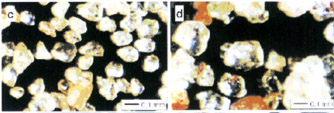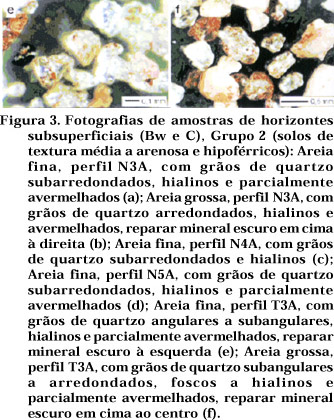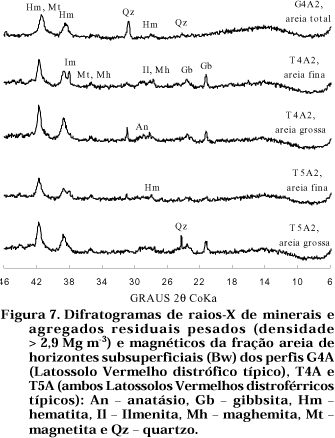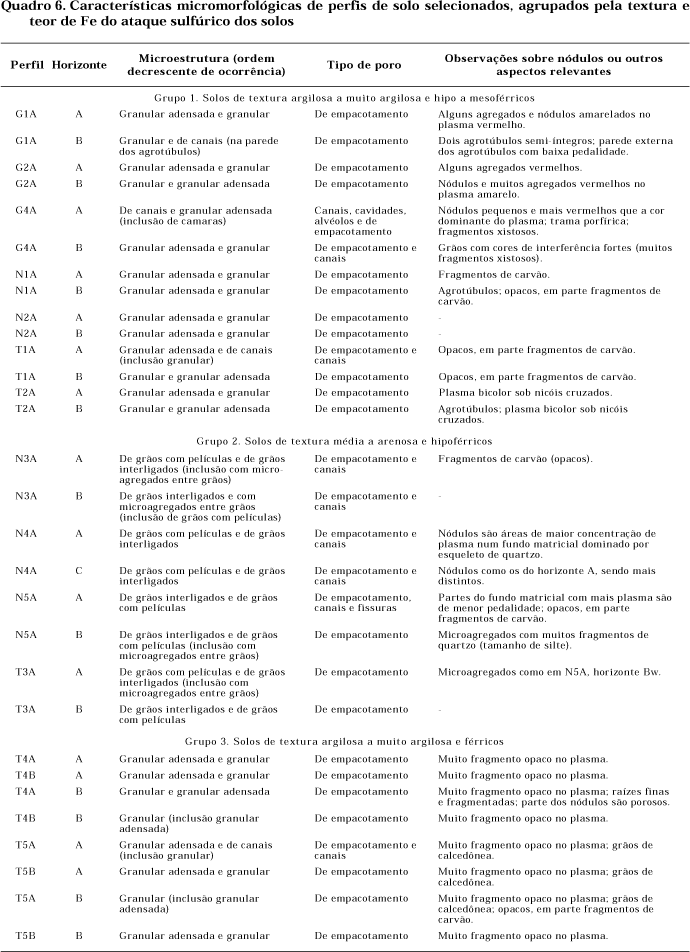The macro and micromorphological characteristics of the surface and subsurface diagnostic horizons of Oxisols and Quartzipsamments of the South American and Velhas geomorphic surfaces were analyzed in profiles under native vegetation cover, in order to establish a reference for future comparisons with similar areas under ongoing human intervention. The soils in their respective subregions and geomorphic surfaces were classified in three groups: Group 1: hypo to mesoferric, clayey to very clayey soils; Group 2: hypoferric; sandy to sandy loam soils, and Group 3: ferric, clayey to very clayey soils. The Bw horizons of the studied clayey and very clayey Oxisols (Groups 1 and 3), with kaolinite/(kaolinite + gibbsita) ratio varying from 0.27 and 0.77, present elevated similarity in macrostructure and microstructure, which are granular. The soil plasma of Group 2 (sandy loam Oxisols and a Quartzipsament) is film-like and is adhered to grains that are dominant in the matrix background. The marked presence of dispersion resistant aggregates in the sand fraction occurred only in Group 3 ferric clayey Oxisols and in more gibsitic Oxisols of Group 1. In Bw horizons of yellowish gibsitic Oxisols of the G2 profiles from eastern Goiás, red colored thick sections and residual aggregates of the sand fraction with presence of hematite detected by X-ray diffraction were observed. These features corroborate the hypothesis of a more humid pedoenvironment at this landscape position compared to that at position G1, where reddish Oxisol profiles are found.
Oxisol; Entisol; micromorphology



























